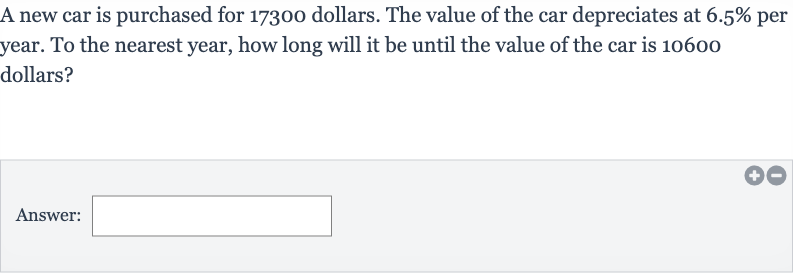Full solution
Q. A new car is purchased for dollars. The value of the car depreciates at per year. To the nearest year, how long will it be until the value of the car is dollars?Answer:
- Identify Values: Identify the initial value, the rate of depreciation, and the final value.The initial value of the car is , the rate of depreciation is per year, and the final value we want to find the time for is .
- Set Up Formula: Set up the formula for exponential decay.The formula for exponential decay is , where is the final amount, is the initial amount, is the rate of depreciation, and is the time in years.
- Substitute Values: Substitute the known values into the formula.
- Solve for t: Solve for t.First, divide both sides by to isolate the exponential part of the equation.
- Take Natural Logarithm: Take the natural logarithm of both sides to solve for .
- Calculate t Value: Calculate the value of .
- Round to Nearest Year: Round the value of to the nearest year.Since we need to find the number of years to the nearest year, we round to years.
More problems from Exponential growth and decay: word problems
QuestionGet tutor help
QuestionGet tutor help
QuestionGet tutor help
QuestionGet tutor help
QuestionGet tutor help
QuestionGet tutor help
QuestionGet tutor help
QuestionGet tutor help
QuestionGet tutor help

